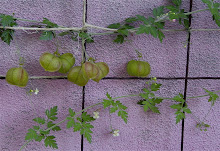
first, the sansevieria, on March 4th
The genus Sansevieria, a member of the agave family (Agavaceae) contains approximately 60 species indigenous to Africa, Arabia, and India.
Sansevieria, whose common names include: mother-in-law's tongue, devil's tongue, and snake plant, is a genus native to tropical and subtropical regions of the Old World.
In Africa, the leaves are used for fibre production; in some species, e.g. Sansevieria ehrenbergii, the plant's sap has antiseptic qualities, and the leaves are used for bandages in traditional first aid.


Hi Cath! Your blog is very nice. The photographs are very beautiful. Let us pray for peace for the world. Let us make the world pollution free and save it for our children. Wish you all the best. God is Great.
ReplyDeletehttp://health-care-you.blogspot.com